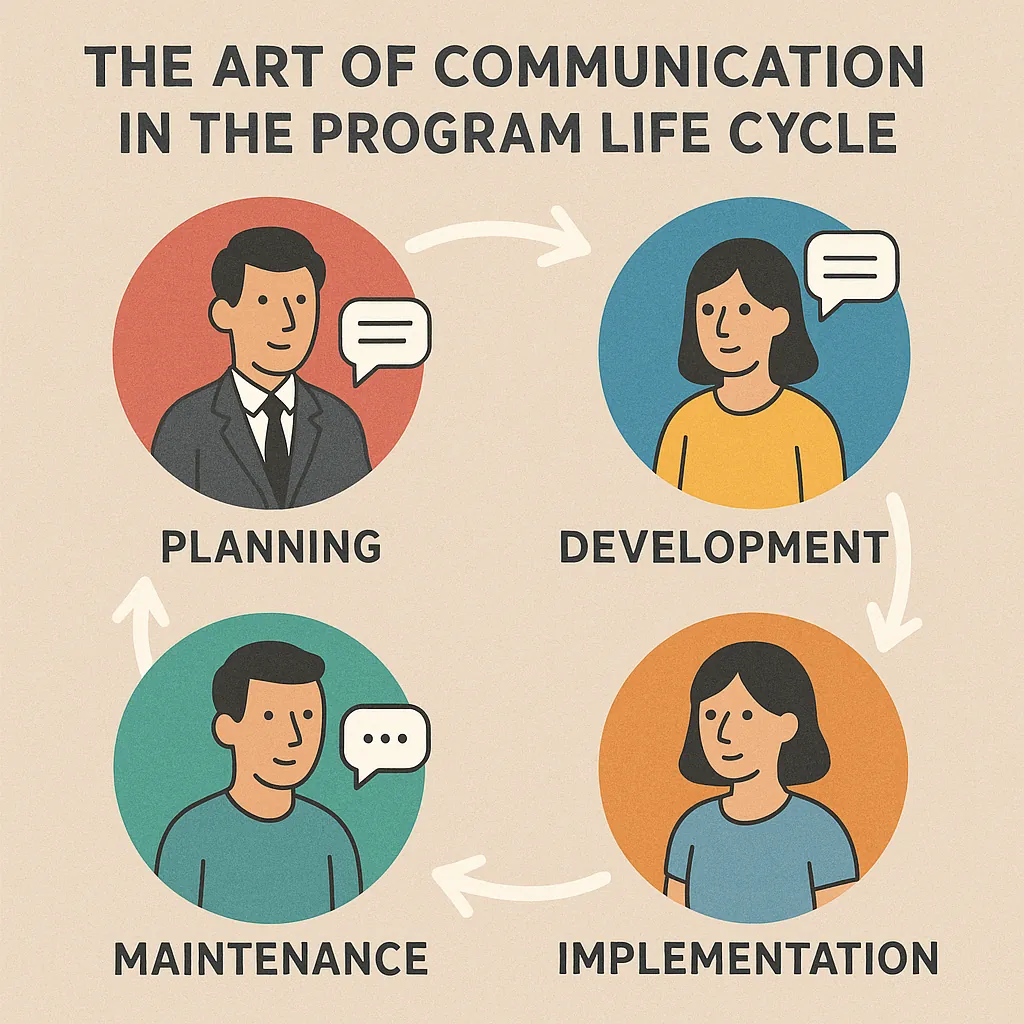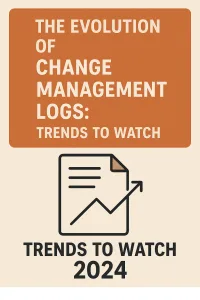Introduction to the Program Life Cycle
Understanding the program life cycle is crucial for ensuring the successful delivery of projects. The program life cycle serves as a structured framework that guides project managers and teams through the various stages of a program, from inception to completion. This section will define the program life cycle, outline its key phases, and emphasize the importance of effective communication throughout each stage.
Definition of Program Life Cycle
The program life cycle refers to the series of phases that a program undergoes from its initial conception to its final closure. It encompasses all the processes and activities necessary to manage a program effectively, ensuring that it meets its objectives and delivers value to stakeholders. By following a defined life cycle, project managers can maintain control over the program, adapt to changes, and ensure alignment with organizational goals.
Overview of Its Phases
The program life cycle is typically divided into five distinct phases:
- Initiation: This phase involves defining the program’s purpose, objectives, and scope. It includes identifying stakeholders, assessing feasibility, and securing necessary approvals. Effective communication is vital here to ensure that all stakeholders have a clear understanding of the program’s goals and their roles.
- Planning: During the planning phase, detailed strategies are developed to achieve the program’s objectives. This includes resource allocation, risk management, and scheduling. Communication is essential for aligning team members and stakeholders on the plan, addressing concerns, and ensuring that everyone is on the same page.
- Execution: In this phase, the plans are put into action. Teams carry out tasks, manage resources, and deliver outputs. Clear and consistent communication is critical to monitor progress, resolve issues, and keep stakeholders informed about developments and changes.
- Monitoring and Controlling: This phase involves tracking the program’s performance against the established plan. It includes measuring progress, managing changes, and ensuring that the program stays on track. Effective communication is necessary to report on performance metrics, discuss variances, and implement corrective actions when needed.
- Closure: The final phase of the program life cycle involves completing all activities, finalizing deliverables, and obtaining stakeholder acceptance. Communication plays a key role in ensuring that lessons learned are documented, stakeholders are informed of the program’s completion, and any remaining issues are addressed.
Importance of Communication in Each Phase
Effective communication is the backbone of successful program management. It fosters collaboration, builds trust, and ensures that all stakeholders are engaged throughout the program life cycle. Here are some key reasons why communication is important in each phase:
- Initiation: Establishes a shared vision and clarifies expectations among stakeholders.
- Planning: Facilitates collaboration and alignment on strategies and resource allocation.
- Execution: Keeps teams informed and motivated, enabling quick resolution of issues.
- Monitoring and Controlling: Provides transparency and accountability, allowing for timely adjustments.
- Closure: Ensures that all stakeholders are acknowledged and that valuable insights are captured for future programs.
Phase One: Initiation
In the initiation phase of the program life cycle, effective communication is paramount for setting the foundation of a successful project. This phase involves several critical strategies that project managers and communication specialists must employ to ensure clarity and alignment among all stakeholders. Here are the key communication strategies to focus on during this phase:
1. Establishing a Clear Vision and Objectives
- Articulate the Vision: Clearly define the program’s vision and objectives to provide a shared understanding among stakeholders. This involves crafting a compelling narrative that outlines the purpose and expected outcomes of the program.
- Use Visual Aids: Incorporate visual tools such as charts, diagrams, or infographics to illustrate the program’s goals and how they align with broader organizational objectives. Visuals can enhance comprehension and retention of information.
2. Engaging Stakeholders and Gathering Requirements
- Identify Key Stakeholders: Early identification of stakeholders is crucial. Engage them through meetings, surveys, or interviews to gather their insights and expectations. This helps in building rapport and trust from the outset.
- Facilitate Open Dialogue: Create an environment that encourages open communication. Use workshops or brainstorming sessions to allow stakeholders to voice their concerns and suggestions, ensuring that their input is valued and considered in the planning process.
3. Communicating Project Feasibility and Alignment with Organizational Goals
- Conduct Feasibility Studies: Share findings from feasibility studies with stakeholders to demonstrate the viability of the project. This includes discussing potential risks, benefits, and resource requirements.
- Align with Organizational Goals: Clearly communicate how the program aligns with the organization’s strategic objectives. This can be achieved through presentations that link the program’s outcomes to the organization’s mission and vision, reinforcing the importance of the project to stakeholders.
By implementing these communication strategies during the initiation phase, project managers can lay a strong foundation for the program, ensuring that all stakeholders are aligned and engaged from the very beginning. This proactive approach not only enhances collaboration but also increases the likelihood of project success as it progresses through subsequent phases.
Phase Two: Planning
In the planning phase of the program life cycle, effective communication is crucial for setting the foundation for successful project execution. This phase involves not only outlining the project objectives and deliverables but also ensuring that all stakeholders are aligned and informed. Here are some key communication strategies to consider:
1. Creating a Comprehensive Communication Plan
- Define Objectives: Establish clear communication objectives that align with the overall goals of the program. This includes determining what information needs to be shared, with whom, and at what frequency.
- Choose Communication Channels: Select appropriate channels for communication, such as emails, meetings, project management tools, or collaborative platforms. Each channel should be suited to the type of information being shared and the audience’s preferences.
- Document Everything: A well-documented communication plan should outline the methods, frequency, and responsible parties for communication. This serves as a reference point for all team members and stakeholders, ensuring consistency and clarity throughout the planning phase.
2. Facilitating Collaboration Among Team Members and Stakeholders
- Encourage Open Dialogue: Foster an environment where team members feel comfortable sharing ideas, concerns, and feedback. Regular check-ins and brainstorming sessions can help facilitate this open communication.
- Utilize Collaborative Tools: Implement tools that promote collaboration, such as shared documents, project management software, and communication platforms. These tools can help streamline discussions and keep everyone on the same page.
- Involve Stakeholders Early: Engage stakeholders in the planning process from the outset. This not only helps in gathering diverse perspectives but also ensures that stakeholders feel valued and invested in the program’s success.
3. Ensuring Everyone Understands Roles, Responsibilities, and Timelines
- Clarify Roles and Responsibilities: Clearly define and communicate the roles and responsibilities of each team member and stakeholder. This can be achieved through RACI (Responsible, Accountable, Consulted, Informed) charts or similar frameworks.
- Set Realistic Timelines: Communicate timelines effectively, ensuring that all team members understand the deadlines and milestones. Use visual aids like Gantt charts to illustrate the project timeline and dependencies.
- Regular Updates: Keep everyone informed about progress and any changes to roles or timelines. Regular updates can help maintain accountability and ensure that everyone is aligned with the project goals.
By implementing these communication strategies during the planning phase, project managers can enhance collaboration, clarify expectations, and set the stage for a successful program execution. Effective communication not only helps in managing the complexities of the project but also fosters a culture of transparency and teamwork, which is essential for achieving project objectives.
Phase Three: Execution
In the execution phase of the program life cycle, effective communication is paramount to ensure that project objectives are met and that the team remains aligned and motivated. This phase is where plans are put into action, and the success of the project heavily relies on how well communication is managed. Here are some key strategies to enhance teamwork and project execution during this critical phase:
1. Regular Updates and Progress Reports
- Establish a Routine: Implement a regular schedule for updates and progress reports. This could be daily stand-ups, weekly meetings, or bi-weekly reports, depending on the project’s complexity and duration. Consistent updates keep everyone informed about the project’s status and any changes that may arise.
- Utilize Visual Tools: Leverage project management tools that provide visual dashboards and progress tracking. Tools like Gantt charts or Kanban boards can help team members visualize their tasks and deadlines, fostering a sense of accountability and urgency.
- Highlight Achievements: Celebrate milestones and achievements during updates. Recognizing individual and team contributions boosts morale and encourages continued effort towards project goals.
2. Encouraging Open Feedback and Communication Channels
- Create a Safe Environment: Foster a culture where team members feel comfortable sharing their thoughts and feedback. This can be achieved by encouraging open dialogue and actively soliciting input from all team members, regardless of their role.
- Implement Feedback Mechanisms: Use tools such as anonymous surveys or suggestion boxes to gather honest feedback. Regularly review this feedback and make adjustments as necessary, demonstrating that team input is valued and acted upon.
- Facilitate Cross-Functional Communication: Encourage collaboration between different teams and departments involved in the project. This can be done through joint meetings or collaborative platforms that allow for seamless communication and information sharing.
3. Managing Conflicts and Issues Through Effective Dialogue
- Address Conflicts Promptly: Conflicts are inevitable in any project. Addressing them quickly and effectively is crucial to maintaining team cohesion. Encourage team members to voice their concerns early and facilitate discussions to resolve issues before they escalate.
- Use Active Listening Techniques: Train team members in active listening skills to ensure that all voices are heard during discussions. This involves acknowledging others’ viewpoints, asking clarifying questions, and summarizing what has been said to confirm understanding.
- Establish Conflict Resolution Protocols: Develop clear protocols for conflict resolution that outline steps to be taken when issues arise. This could include mediation by a neutral party or structured problem-solving sessions to find mutually agreeable solutions.
By implementing these communication strategies during the execution phase, project managers can enhance teamwork, improve project execution, and ultimately drive the project towards successful completion. Effective communication not only helps in managing tasks but also strengthens relationships within the team, fostering a collaborative environment that is essential for achieving project goals.
Phase Four: Monitoring and Controlling
The Monitoring and Controlling phase is crucial for ensuring that a program stays on track and meets its objectives. Effective communication during this phase not only supports oversight but also enhances adaptability to changes. Here are some key communication practices that can significantly impact the success of this phase:
Establishing Metrics for Performance Communication
- Define Clear Metrics: Establishing specific, measurable performance metrics is essential for effective communication. These metrics should align with the program’s goals and objectives, providing a clear framework for assessing progress. For instance, using Key Performance Indicators (KPIs) can help project managers communicate performance levels to stakeholders effectively.
- Regular Updates: Communicate these metrics regularly to all stakeholders. This ensures that everyone is aware of the program’s status and can make informed decisions based on the latest data. Regular updates foster a culture of transparency and accountability.
Using Dashboards and Reporting Tools for Transparency
- Implement Dashboards: Utilizing dashboards can significantly enhance communication by providing a visual representation of project data. Dashboards allow stakeholders to quickly grasp the current status of the program, including progress against timelines, budget adherence, and resource allocation. This visual tool can facilitate discussions and decision-making processes.
- Automated Reporting Tools: Leverage automated reporting tools to streamline the communication of performance data. These tools can generate reports that highlight key metrics, trends, and areas needing attention, ensuring that stakeholders receive timely and relevant information without manual effort.
Adapting Communication Based on Project Changes and Stakeholder Feedback
- Responsive Communication: As projects evolve, so too should the communication strategies employed. Be prepared to adapt your communication style and frequency based on project changes and stakeholder feedback. For example, if a significant change occurs, a more detailed communication may be necessary to address concerns and clarify the implications of the change.
- Feedback Loops: Establishing feedback loops is vital for understanding stakeholder perceptions and concerns. Regularly solicit feedback on communication effectiveness and be willing to adjust your approach based on this input. This not only improves communication but also strengthens stakeholder relationships and trust.
- Crisis Communication Plans: In the event of unforeseen challenges, having a crisis communication plan in place can help manage stakeholder expectations and maintain transparency. Clearly outline how information will be communicated during a crisis, ensuring that all parties are informed and engaged.
By implementing these communication practices during the Monitoring and Controlling phase, project managers can enhance oversight and adaptability, ultimately leading to more successful program outcomes. Effective communication not only keeps stakeholders informed but also fosters a collaborative environment where issues can be addressed promptly and efficiently.
Phase Five: Closure
In the program life cycle, the closure phase is critical for ensuring that all project activities are completed, evaluated, and documented. Effective communication during this phase not only solidifies the project’s outcomes but also sets the stage for future initiatives. Here are some essential communication strategies for a successful project closure:
1. Conducting Final Evaluations and Lessons Learned Sessions
- Facilitate Open Discussions: Organize sessions where team members can share their experiences, challenges, and successes throughout the project. This open dialogue fosters a culture of transparency and encourages constructive feedback.
- Document Insights: Capture the lessons learned in a structured format. This documentation should include what worked well, what didn’t, and recommendations for future projects. Sharing this information with stakeholders can enhance organizational knowledge and improve future project planning.
- Engage Stakeholders: Involve key stakeholders in the evaluation process to gather diverse perspectives. Their insights can provide valuable context and help in understanding the broader impact of the project.
2. Communicating Project Outcomes and Success to Stakeholders
- Prepare a Comprehensive Report: Create a detailed report that outlines the project’s objectives, outcomes, and overall performance against the initial goals. This report should be tailored to the interests of different stakeholders, highlighting aspects that matter most to them.
- Utilize Visual Aids: Incorporate charts, graphs, and infographics to present data clearly and effectively. Visual representations can help stakeholders quickly grasp the project’s achievements and areas for improvement.
- Host a Closure Meeting: Organize a formal meeting with stakeholders to present the final outcomes. This meeting should provide an opportunity for stakeholders to ask questions, provide feedback, and discuss the implications of the project results.
3. Celebrating Achievements and Recognizing Team Contributions
- Acknowledge Team Efforts: Publicly recognize the contributions of team members during the closure phase. This can be done through awards, certificates, or simple acknowledgments in meetings. Celebrating achievements boosts morale and reinforces a sense of accomplishment.
- Organize a Celebration Event: Host a gathering or event to celebrate the successful completion of the project. This not only honors the hard work of the team but also strengthens relationships among team members and stakeholders.
- Share Success Stories: Communicate the project’s success stories through newsletters, social media, or internal communications. Highlighting these stories can enhance the organization’s reputation and inspire future projects.
Challenges in Program Communication
Effective communication is a cornerstone of successful program management, yet it often encounters various challenges throughout the program life cycle. Understanding these challenges is essential for project managers and communication specialists aiming to foster collaboration and ensure project success. Here are some key points to consider:
Identifying Barriers to Effective Communication
- Information Overload: In complex programs, the sheer volume of information can overwhelm team members, leading to confusion and miscommunication. It is crucial to streamline communication channels and prioritize essential information to avoid this pitfall.
- Lack of Clarity: Ambiguities in messaging can result in misunderstandings. Clear, concise communication is vital, especially when conveying project goals, roles, and responsibilities. Utilizing standardized templates and guidelines can help mitigate this issue.
- Time Zone Differences: For programs involving global teams, coordinating communication across different time zones can be challenging. Establishing a common schedule for meetings and updates can help ensure that all team members are informed and engaged.
Overcoming Cultural and Organizational Differences
- Cultural Sensitivity: Diverse teams may have varying communication styles influenced by cultural backgrounds. Project managers should promote cultural awareness and sensitivity training to foster an inclusive environment where all voices are heard.
- Organizational Silos: Different departments may have distinct communication practices, leading to fragmentation. Encouraging cross-departmental collaboration and regular inter-team meetings can help bridge these gaps and promote a unified approach to communication.
- Resistance to Change: Implementing new communication strategies may face resistance from team members accustomed to traditional methods. Engaging stakeholders early in the process and demonstrating the benefits of new approaches can facilitate smoother transitions.
Leveraging Technology to Enhance Communication
- Collaboration Tools: Utilizing project management and collaboration tools (e.g., Slack, Microsoft Teams, Asana) can streamline communication and enhance real-time collaboration. These platforms allow for easy sharing of updates, documents, and feedback, reducing the likelihood of miscommunication.
- Video Conferencing: In an increasingly remote work environment, video conferencing tools (e.g., Zoom, Google Meet) can help maintain personal connections among team members. Regular face-to-face interactions, even virtually, can strengthen relationships and improve understanding.
- Feedback Mechanisms: Implementing regular feedback loops through surveys or check-ins can help identify communication issues early on. This proactive approach allows teams to address concerns before they escalate, ensuring that communication remains effective throughout the program life cycle.
By addressing these challenges and implementing effective communication strategies, project managers and communication specialists can enhance collaboration, reduce misunderstandings, and ultimately drive program success.
Best Practices for Effective Communication in Programs
Effective communication is a cornerstone of successful program management. As programs progress through their life cycle, the need for clear, concise, and timely communication becomes increasingly critical. Here are some actionable tips and best practices to enhance communication across the program life cycle:
1. Adopting a Proactive Communication Approach
- Anticipate Needs: Project managers should anticipate the information needs of stakeholders at each phase of the program. This involves understanding who needs what information, when they need it, and in what format.
- Regular Updates: Schedule regular updates to keep all stakeholders informed about progress, challenges, and changes. This can help prevent misunderstandings and ensure everyone is aligned with the program’s goals.
- Risk Communication: Proactively communicate potential risks and issues as they arise. This transparency fosters trust and allows for collaborative problem-solving.
2. Utilizing Diverse Communication Methods
- Meetings: Use meetings strategically to facilitate discussions, brainstorm solutions, and make decisions. Ensure that meetings have clear agendas and objectives to maximize productivity.
- Emails: While emails are a common communication tool, they should be used judiciously. Keep emails concise and focused, and use them for important updates or to share documents that require review.
- Reports: Regularly distribute progress reports that summarize key metrics, milestones, and any deviations from the plan. Tailor the content of reports to the audience, ensuring that technical details are accessible to non-technical stakeholders.
- Collaboration Tools: Leverage collaboration platforms (like Slack, Microsoft Teams, or Asana) to facilitate real-time communication and document sharing. These tools can enhance team collaboration and keep everyone on the same page.
3. Encouraging a Culture of Open Communication and Continuous Feedback
- Open Door Policy: Foster an environment where team members feel comfortable sharing their thoughts and concerns. An open-door policy encourages dialogue and can lead to innovative solutions.
- Feedback Mechanisms: Implement regular feedback loops, such as surveys or one-on-one check-ins, to gather insights from team members and stakeholders. This feedback can inform adjustments to communication strategies and program execution.
- Recognition and Acknowledgment: Recognize and celebrate contributions from team members. Acknowledging efforts not only boosts morale but also reinforces the importance of communication within the team.
By implementing these best practices, project managers and communication specialists can significantly enhance the effectiveness of communication throughout the program life cycle. This proactive and inclusive approach not only improves stakeholder engagement but also contributes to the overall success of the program.
Conclusion
Effective communication is the backbone of successful program management, influencing every phase of the program life cycle. As we have explored, each stage—from initiation to closure—requires tailored communication strategies to ensure that all stakeholders are aligned and informed. Here’s a recap of the key communication strategies for each phase:
- Initiation Phase: Establish clear communication channels and set expectations early. Engage stakeholders through kick-off meetings to foster a shared understanding of the program’s objectives and scope.
- Planning Phase: Utilize collaborative tools and techniques to facilitate open dialogue among team members. Regular updates and feedback loops are essential to refine plans and address any concerns proactively.
- Execution Phase: Maintain transparency through consistent status reports and team meetings. Encourage an environment where team members feel comfortable sharing progress and challenges, which can lead to timely problem-solving.
- Monitoring and Controlling Phase: Implement structured communication protocols to track performance metrics and manage changes effectively. Regular check-ins and reviews help ensure that the program stays on course and that any deviations are promptly addressed.
- Closure Phase: Conduct a thorough debriefing session to capture lessons learned and celebrate successes. This phase is crucial for reinforcing the importance of communication and ensuring that insights are documented for future programs.
In conclusion, prioritizing communication throughout the program life cycle is not just beneficial; it is essential for achieving project goals and fostering a collaborative team environment. As project managers and communication specialists, it is imperative to implement the strategies discussed to enhance communication effectiveness. By doing so, you will not only improve project outcomes but also build stronger relationships with stakeholders, ultimately leading to greater success in your programs.
Find out more about Shaun Stoltz https://www.shaunstoltz.com/about/.
This post was written by an AI and reviewed/edited by a human.



